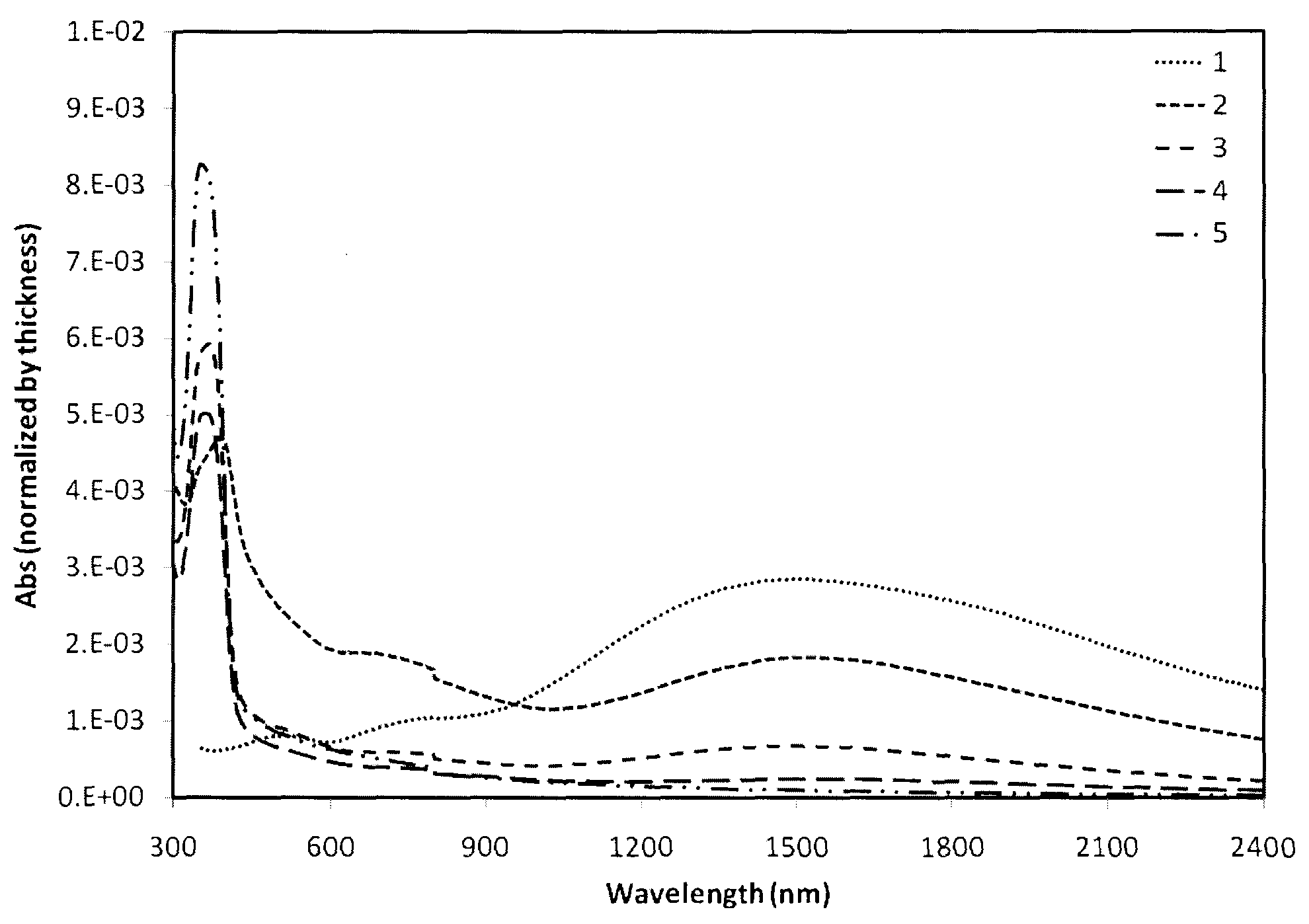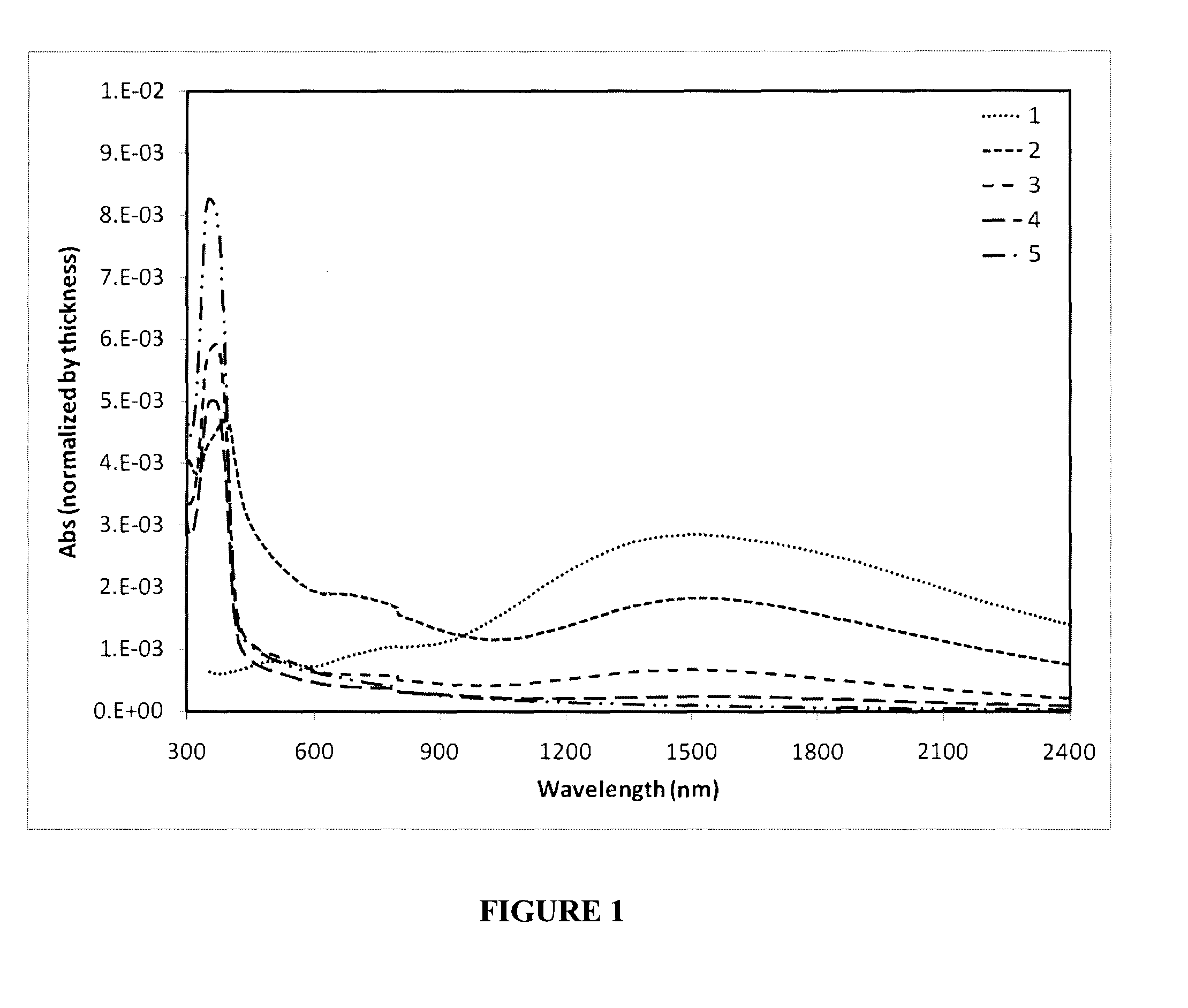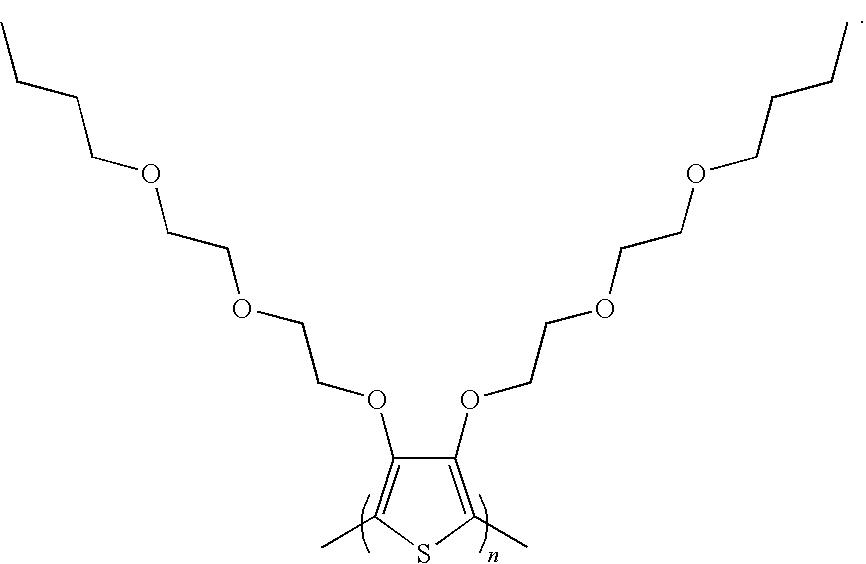Charge injection and transport layers
a technology of charge injection and transport layer, which is applied in the direction of sustainable manufacturing/processing, non-metal conductor manufacturing, and final product manufacturing, etc., can solve the problems of difficult problems of hole injection layer and hole transport layer, and achieve the effects of improving the efficiency of organic electronic device, improving device life, and increasing device efficiency
- Summary
- Abstract
- Description
- Claims
- Application Information
AI Technical Summary
Benefits of technology
Problems solved by technology
Method used
Image
Examples
working examples
Example 1
Representative Formulations
[0118]A series of HIL ink formulations were prepared containing PDBEETh and IMDPIB(PhF5)4 as conductive conjugated polymer and dopant, and NPB as semiconducting matrix polymer, as shown in Table 1 below.
[0119]The ink formulations were obtained using the following general procedure: Separate stock solutions of PDBEETh and IMDPIB(PhF5)4 in CHCl3 were first prepared, each containing 0.5% (w / w) solids. Various amounts of each stock solution were combined as indicated in Table 1. For each formulation, the stock solution of IMDPIB(PhF5)4 was added to the PDBEETh stock solution so that the moles of IMDPIB(PhF5)4 dopant per repeat unit of the PDBEETh polymer was kept at 0.3. The resulting combined solution was refluxed for 2 h under a nitrogen blanket and stored in the glove-box. The indicated weight percent of NPB (added as a 0.5% (w / w) stock solution in chloroform) was added to the doped PDBEETh to prepare the final ink formulation.
TABLE 1Composition of...
example 2
OLED Device Fabrication
[0122]OLED devices were fabricated following procedures known in the art. The devices were fabricated on indium tin oxide (ITO) surfaces deposited on glass substrates. The ITO surface was pre-patterned to define the pixel area of 0.05 cm2. The device substrates were cleaned by ultrasonication in a dilute soap solution for 20 minutes followed by distilled water washes. This was followed by ultrasonication in isopropanol for 20 minutes. The substrates were dried under nitrogen flow, followed by treatment in a UV-Ozone chamber operating at 300 W for 20 minutes.
[0123]The cleaned substrates were then coated with an HIL ink formulation and dried at 90-170° C. for 5-15 minutes to form an HIL film layer. Dry film thicknesses ranged from approximately 20 nm to 60 nm. The coating process was done on a spin coater, but can be similarly achieved with spray coating, ink-jetting, contact printing, or any other deposition method capable of resulting in an HIL film of the des...
example 3
OLED Device Testing
[0127]Performance tests were conducted on the OLED devices of Example 2. Typically, performance is quantified by a combination of different parameters such as operating voltage (should be low), brightness in nits (should be bright, luminous), efficiency in units of cd / A (reflecting how much electric charge is needed to obtain light from the device), and the lifetime under operation (time required to reach half of the initial luminance value at the start of the test). As such, the overall performance is very important in a comparative evaluation of HIL performance. Performance of the devices was tested using the using the following procedures.
[0128]The OLED devices comprise pixels on a glass substrate whose electrodes extend outside the encapsulated area of the device which contain the light emitting portion of the pixels. The typical area of each pixel in such devices is 0.05 cm2. To test the devices, the electrodes were contacted with a current source meter such ...
PUM
| Property | Measurement | Unit |
|---|---|---|
| thick | aaaaa | aaaaa |
| thickness | aaaaa | aaaaa |
| wavelength | aaaaa | aaaaa |
Abstract
Description
Claims
Application Information
 Login to View More
Login to View More - R&D
- Intellectual Property
- Life Sciences
- Materials
- Tech Scout
- Unparalleled Data Quality
- Higher Quality Content
- 60% Fewer Hallucinations
Browse by: Latest US Patents, China's latest patents, Technical Efficacy Thesaurus, Application Domain, Technology Topic, Popular Technical Reports.
© 2025 PatSnap. All rights reserved.Legal|Privacy policy|Modern Slavery Act Transparency Statement|Sitemap|About US| Contact US: help@patsnap.com



